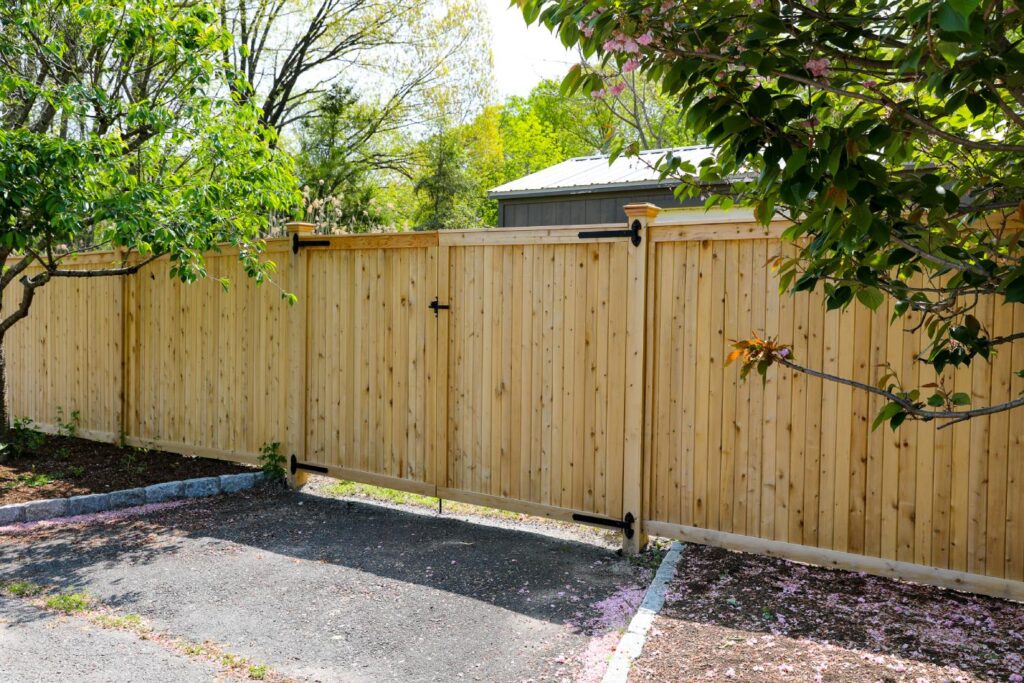All Categories
Featured

A fence is a useful addition to any kind of property, offering protection, privacy, and enhancing the overall visual charm of your home or business. Like any type of outside framework, a fence will normally wear down over time due to exposure to the components, crashes, or merely age. Recognizing the indications that your fencing needs to be changed can aid you avoid additional damage and keep the safety and security and appearance of your residential or commercial property. Right here are some key signs that it's time to replace your fence.

- Visible Damage or Degeneration
Among one of the most evident signs that your fence requires to be replaced shows up damage. Whether it's from weathering, mishaps, or parasites, any kind of major splits, splintering, or missing out on boards can dramatically lower the structural stability of your fence. Replacing the whole fencing might be much more economical in the long run. if the damages is extensive and goes past just a few repairs.
- Leaning or Sagging
A sagging or leaning fencing is a clear indication of a trouble. With time, the posts and rails can change due to wetness, decomposing, or bad installment. If your fencing is no more standing right or leaning at an angle, it's an excellent sign that the structure is jeopardized, which may call for a complete replacement. Also if the fencing seems leaning somewhat, it can be an indication of underlying architectural concerns that can get worse with time.
- Rotting or Decaying Wood

Wooden fences are specifically vulnerable to rot and decay, particularly in areas that experience high levels of dampness or moisture. If you notice that components of your wooden fence are soft, discolored, or have visible mold and mildew, these are all indications of rot.
- Rust and Rust (For Steel Fencings)
If you have a steel corrosion, rust and fence are usual indicators of degeneration. Over time, exposure to humidity, rainfall, and snow can create steel fences to create corrosion spots, which can spread out and damage the framework. While minor rusting can sometimes be repaired, considerable rusting or rust may make the fencing unsafe and demand a complete replacement. If you see any type of substantial weakening or big areas of rust, it might be time to take into consideration changing your metal fence.
- Fencing No Longer Fulfills Your Demands
One more reason to change your fence might be that it no more offers its desired function. With time, your needs might alter-- possibly you need a higher fence for even more privacy or a stronger one for increased security. If your fencing no more fulfills your needs or does not line up with your existing choices, it might be time to upgrade to a brand-new, much more useful design.
- Fading and Discoloration
While fading and staining are usually aesthetic concerns, they can still show that your fencing is maturing. Exposure to UV rays and harsh weather condition can cause fencings to shed their initial color, making them look worn and dull. If the fading is substantial and you have actually currently attempted discoloring the fence and cleansing, it could be time to change it to recover the appearance of your building.
- Regular Fixings
If you locate on your own regularly repairing your fencing, maybe a sign that the fence is nearing the end of its life expectancy. While small repair work can prolong the life of a fence, constant fixes might suggest that the structure is no much longer stable. In this case, it might be much more cost-efficient to replace the whole fencing instead of remaining to purchase repair services.
Conclusion
Changing a fencing is a considerable financial investment, however it is important for preserving the security, privacy, and curb charm of your residential or commercial property. If your fence is revealing signs of damage, rot, leaning, or other structural issues, it's critical to evaluate whether a substitute is necessary. By determining these indication early, you can make enlightened choices about when to change your fence, ensuring your building continues to be secure and visually appealing for many years to find.
Latest Posts
Discover Budget-Friendly Auto Repairs with Montclare’s Exclusive Service Specials
Published May 30, 25
1 min read
Learn About Brake Repair & More: Comprehensive Auto Care Solutions from Montclare Auto Repair
Published May 22, 25
1 min read
Why Routine Vehicle Maintenance at Montclare Auto Repair Saves You Money
Published May 22, 25
1 min read
More
Latest Posts
Discover Budget-Friendly Auto Repairs with Montclare’s Exclusive Service Specials
Published May 30, 25
1 min read
Learn About Brake Repair & More: Comprehensive Auto Care Solutions from Montclare Auto Repair
Published May 22, 25
1 min read
Why Routine Vehicle Maintenance at Montclare Auto Repair Saves You Money
Published May 22, 25
1 min read